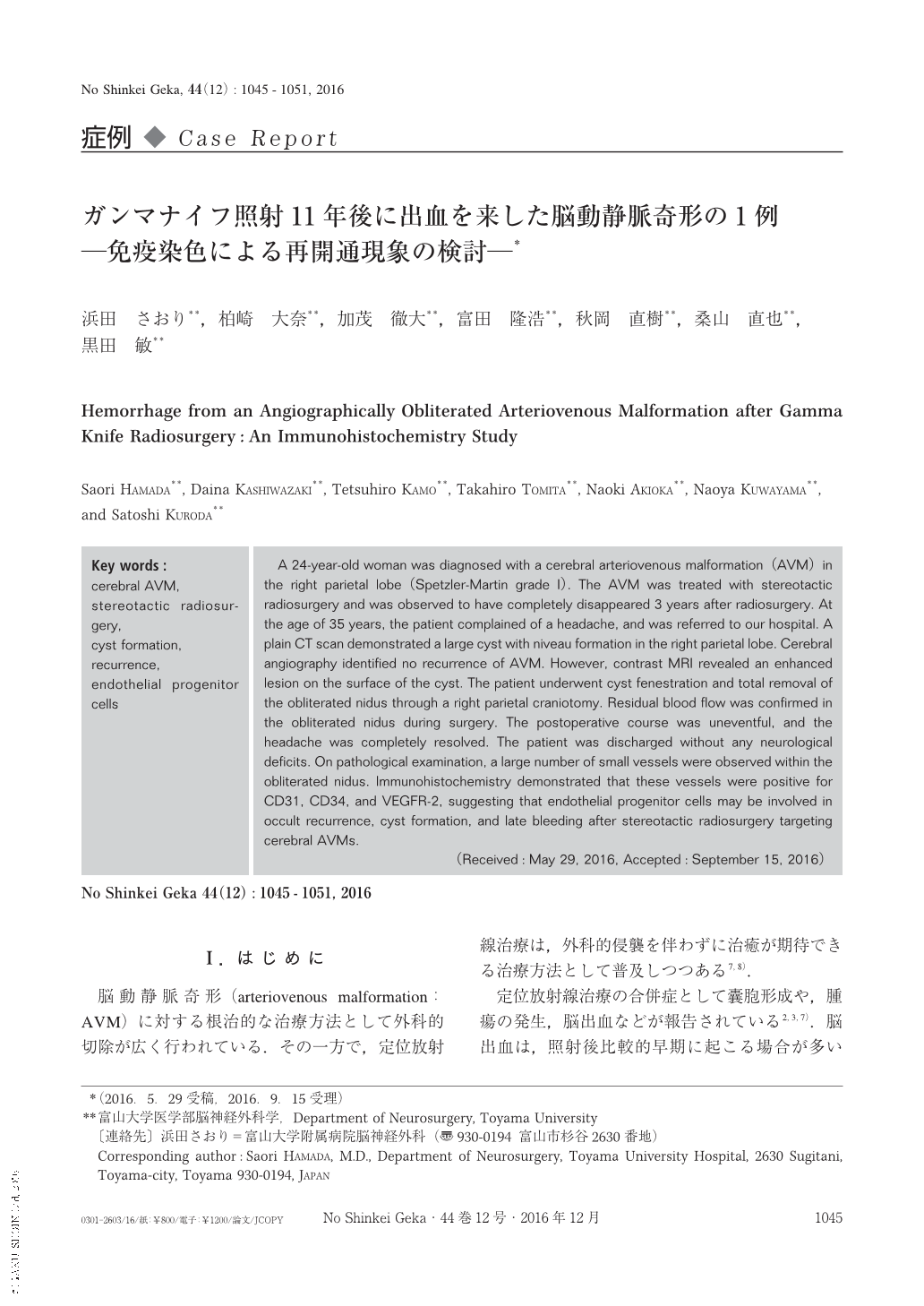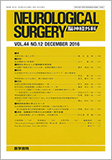Japanese
English
- 有料閲覧
- Abstract 文献概要
- 1ページ目 Look Inside
- 参考文献 Reference
Ⅰ.はじめに
脳動静脈奇形(arteriovenous malformation:AVM)に対する根治的な治療方法として外科的切除が広く行われている.その一方で,定位放射線治療は,外科的侵襲を伴わずに治癒が期待できる治療方法として普及しつつある7,8).
定位放射線治療の合併症として囊胞形成や,腫瘍の発生,脳出血などが報告されている2,3,7).脳出血は,照射後比較的早期に起こる場合が多いが,定位放射線治療後に脳血管撮影やMRAで描出の消失が確認されたにもかかわらず,長期間経過した後に出血する例が報告されている3).しかし,その機序に関しては脳AVMの再開通や海綿状血管腫の形成などが報告されているものの,詳細な病態は未だに不明である.今回われわれは,ガンマナイフ治療後に血管撮影上,閉塞が確認されたにもかかわらず,照射11年後に囊胞形成とともに出血を来した1例を経験した.摘出した病変を詳細に検討したところ,脳AVMの再開通に血管内皮前駆細胞(endothelial progenitor cells:EPCs)が関与していると考えられたので,その病理学的所見を中心に報告する.
A 24-year-old woman was diagnosed with a cerebral arteriovenous malformation(AVM)in the right parietal lobe(Spetzler-Martin grade Ⅰ). The AVM was treated with stereotactic radiosurgery and was observed to have completely disappeared 3 years after radiosurgery. At the age of 35 years, the patient complained of a headache, and was referred to our hospital. A plain CT scan demonstrated a large cyst with niveau formation in the right parietal lobe. Cerebral angiography identified no recurrence of AVM. However, contrast MRI revealed an enhanced lesion on the surface of the cyst. The patient underwent cyst fenestration and total removal of the obliterated nidus through a right parietal craniotomy. Residual blood flow was confirmed in the obliterated nidus during surgery. The postoperative course was uneventful, and the headache was completely resolved. The patient was discharged without any neurological deficits. On pathological examination, a large number of small vessels were observed within the obliterated nidus. Immunohistochemistry demonstrated that these vessels were positive for CD31, CD34, and VEGFR-2, suggesting that endothelial progenitor cells may be involved in occult recurrence, cyst formation, and late bleeding after stereotactic radiosurgery targeting cerebral AVMs.

Copyright © 2016, Igaku-Shoin Ltd. All rights reserved.


